Spanish look at a wheeled armored personnel carrier. BTR BMR-600
Combat buses. Today, Spain has a fairly large arsenal of armored vehicles in comparison with other European countries. The Spanish Army is armed with more than 330 tanks "Leopard 2", this is more than that of Germany itself, 84 Centauro wheeled tanks, almost 400 infantry fighting vehicles and about a thousand armored personnel carriers, of which several hundred are BMR-600 wheeled armored personnel carriers. This armored personnel carrier with a 6x6 wheel formula was developed in Spain in the 1970s, but after the upgrades, it still remains in service, making up an impressive part of the fleet of Spanish wheeled armored vehicles.
History of the creation of the BMR armored personnel carrier
The requirements for a new wheeled combat vehicle were developed by the Spanish military in the early 1970s. Fully technical and tactical requirements were ready in 1972. Then the military turned to representatives of the Spanish industry with an order to create an armored armed wheeled vehicle designed to transport an infantry squad to the combat zone, as well as actions directly in a combat situation. The project of the new armored personnel carrier, which was originally considered as a base for armored vehicles for various purposes, was jointly developed by the Arms Development Commission, the army and the large industrial company ENASA.
It should be noted that ENASA was founded in 1946 and at that time was a major manufacturer of automotive equipment. In many ways, the company was the heir to the automotive assets of Hispano-Suiza's Spanish division. By the beginning of the 1970s, the company was producing a fairly large line of trucks, buses, tractors, as well as armored vehicles for the Spanish army under its own brand Pegaso. The development process of the new armored personnel carrier took four years, all this time the Spanish designers worked on prototypes and tested them.
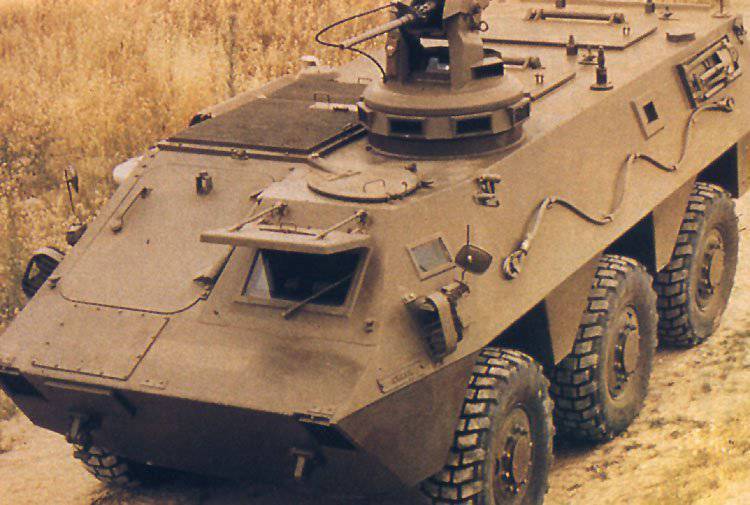
Armored personnel carrier BMR-600
It is known that during the tests, the Spanish APC competed with foreign counterparts: the French armored personnel carrier Renault VAB and the Swiss MOWAG Piranha. All cars were considered with a 6x6 wheel arrangement. The development of the company ENASA convincingly looked against the background of competitors and left the Spanish military a favorable impression. Quite quickly, the military presented a whole line of wheeled armored vehicles: the armored personnel carrier itself: Pegaso 3560/1 model; self-propelled 81-mm mortar Pegaso 3560/3; Pegaso 3560/5 command and staff vehicle; as well as the Pegaso 3564 fire support vehicle, on which various towers with artillery weapons could be installed, including the French two-seat turret TS-90 with a 90-mm gun located inside.
As a result, the new armored personnel carrier under the designation BMR-600 and the line of vehicles based on it were adopted. Serial production of armored personnel carriers, also known as the Pegaso 3560 BMR, began in 1979. The need of the Spanish army in such equipment was initially estimated at about 500 pieces. In total, during the mass production in Spain, more than 1200 combat vehicles were assembled on this chassis, half of which went for export. Armored personnel carriers were acquired by the armies of Egypt, Saudi Arabia, Morocco, as well as Mexico and Peru, however, the last two countries were limited to very small parties. Currently, the Spanish army still has 312 armored personnel carriers BMR-600 and upgraded BMR M1 vehicles, without taking into account the equipment remaining in storage. It is assumed that they will remain in service until they are completely replaced by the new four-axis Dragon armored personnel carrier, based on the chassis of the Piranha 5 armored personnel carrier.
Technical features of the BMR armored personnel carrier
For their wheeled armored personnel carrier, Spanish designers have chosen the following layout. In front of the left side is the driver’s seat, immediately behind it is the arrow / radio operator’s seat. To the right of them is the engine-transmission compartment, in which the diesel engine is located, the exhaust pipe is displayed on the right side of the case. In the aft of the combat vehicle is the landing squad. The crew of the car consists of two people. In the paratrooper squad are places for 10 foot soldiers.
The body of the armored personnel carrier was made of aluminum armored plates by welding. All armor plates are located at rational angles of inclination. The upper frontal part provided protection from bullets of caliber up to 12,7 mm inclusive, as well as 7,62 mm armor-piercing bullets. The circular armor protected the APC from small arms fire weapons caliber up to 7,62 mm and fragments of shells and min. In addition, the armored personnel carrier had to withstand the detonation of a mine containing up to 3 kg of explosives. At that time, such armor protection was considered sufficient, but in the course of subsequent upgrades, the reservation was significantly strengthened. For landing and disembarking from an armored personnel carrier, paratroopers could use two large hatches located in the roof of the hull, but the main method of disembarkation was a stern ramp. An additional method of evacuation from the combat vehicle subsequently became a side door located on the left side in the rear of the hull. It could be used if the rear ramp did not open for some reason.
The main weapon of the BRM-600 armored personnel carriers was a large-caliber 12,7 mm M2 HB machine gun, which was mounted outside the 360-degree turret TC-3 developed by Santa Barbara Sistemas. It was possible to reload the machine gun and control it without leaving the fighting vehicle. The machine gun had good angles of vertical guidance from -15 to +60 degrees, which allowed it to be used for firing at air targets. Ammunition for the machine gun was 2500 rounds.
The new Spanish wheeled armored personnel carrier, which was used in the army along with the American tracked M113, received a three-axle scheme with a 6x6 wheel arrangement and two front steering axles. The combat vehicle received an independent hydropneumatic suspension, which is able to change the clearance of the armored personnel carrier depending on the terrain in which the vehicle has to move. The maximum ground clearance was 400 mm. The armored personnel carrier is 6150 mm long, 2500 mm wide, and 2360 mm high. The armored personnel carrier was originally developed as amphibious, so it is not afraid of water obstacles. To overcome water barriers, two water-jet propulsion devices with which its speed on water was 10 km / h could optionally be installed on an armored personnel carrier, when using only wheels, the speed dropped to 4,5 km / h.
The heart of the combat vehicle was the 8-cylinder Pegasus 9157/8 diesel engine, delivering a maximum power of 305 hp. Engine power was enough to disperse an APC with a combat weight of about 14 tons to a speed of 100 km / h when driving on a highway. The cruising range was 1000 km, very worthy indicators for wheeled military equipment. The armored personnel carrier felt good on rough terrain, characterized by good cross. He could overcome rises up to 60 degrees, ditches and trenches up to 1,2 meters wide and vertical walls up to 0,8 meters high.
Upgrade Option to BMR M1
Since 1996, almost all the machines remaining in the arsenal of the Spanish army have been upgraded to the BMR M1 version. Santa Barbara Sistemas, which today is one of the largest Spanish defense companies specializing in the production of various armored vehicles, was responsible for the modernization of combat vehicles. Since 2001, the company has been a division of European Land Systems of General Dynamics. During the modernization, the cars received a lightweight and more compact 6-cylinder Scania DS9 diesel engine with 310 hp and a new 365 liter fuel tank (instead of the 300-liter).
The protection of the armored personnel carrier was seriously enhanced by the placement of mounted steel armor, which led to an increase in the combat weight of the vehicle to 15,4 tons, while the maximum speed dropped to 95 km / h. In addition, the updated armored personnel carriers received new air conditioning and heating systems, an upgraded engine fire extinguishing system, night vision devices for the driver, a GPS positioning system, a height-adjustable steering wheel, and ventilated brakes. Also, the configuration of the airborne squad has undergone changes, the number of infantrymen received has dropped to 8 people. The updated version of the armored personnel carrier was widely used by the Spanish military during peacekeeping missions in the Balkans, Afghanistan and Iraq. Also, the machine was used in combat by the armies of Egypt and Saudi Arabia.
- Yuferev Sergey
- BTR-60. The world's first production four-axle armored personnel carrier
OT-64 SKOT. Armored personnel carrier that surpassed the BTR-60
M113. The most massive armored personnel carrier in history
BTR-50P. By land and by water
A real combat bus. BTR-152
BTR-40. The first Soviet serial armored personnel carrier
The most massive armored personnel carrier of World War II
The main armored personnel carrier of the Wehrmacht. Sd.Kfz. 251 Ganomage
The first armored personnel carrier from Scandinavia. Terrangbil m / 42 KP
Armored personnel carrier from "Sherman"
Light multipurpose armored personnel carrier Universal Carrier
The first armored personnel carrier in history. Mark ix
The most dangerous "Buffalo" in the world. BTR Buffel
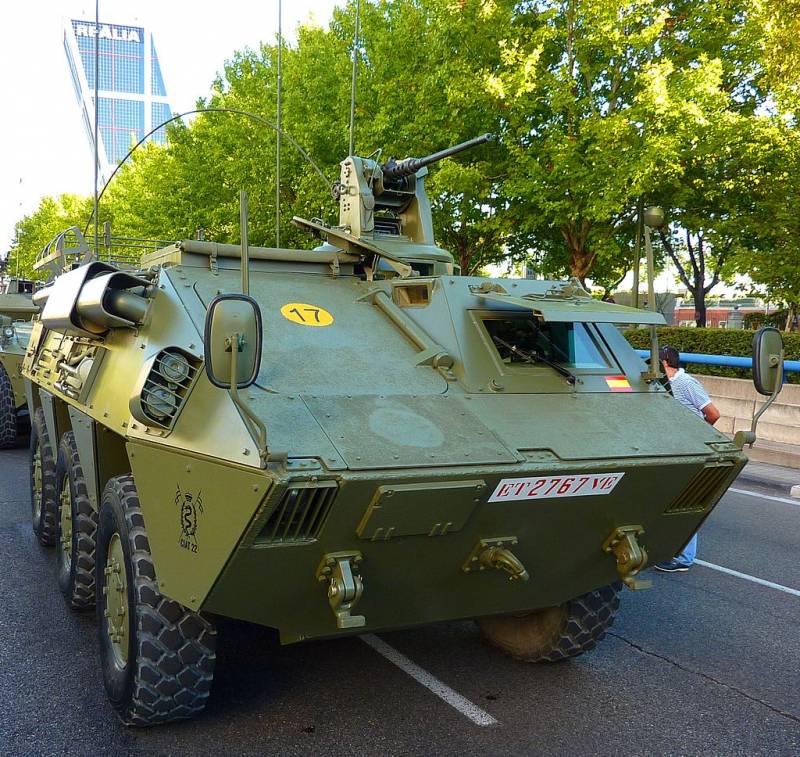
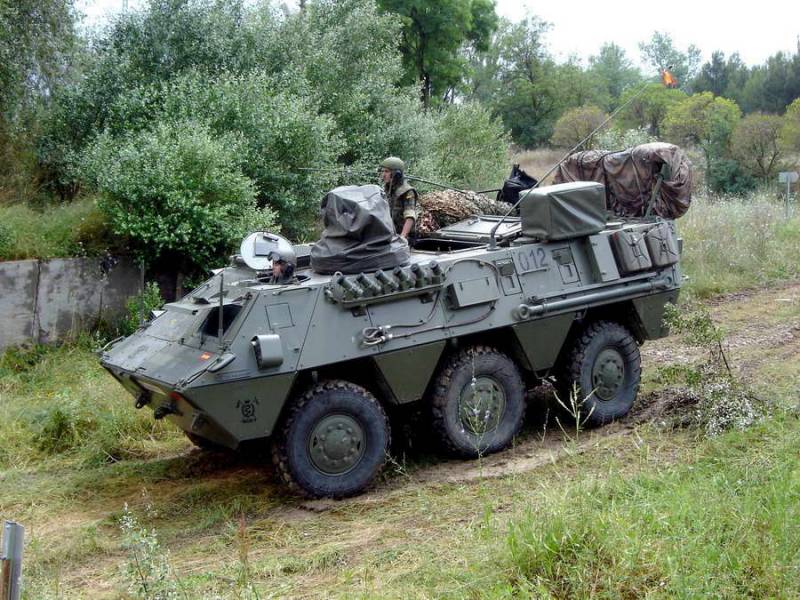
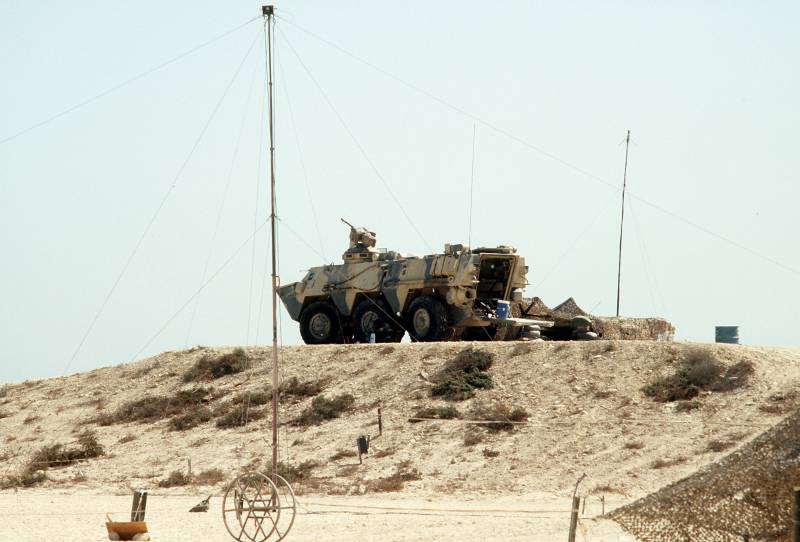
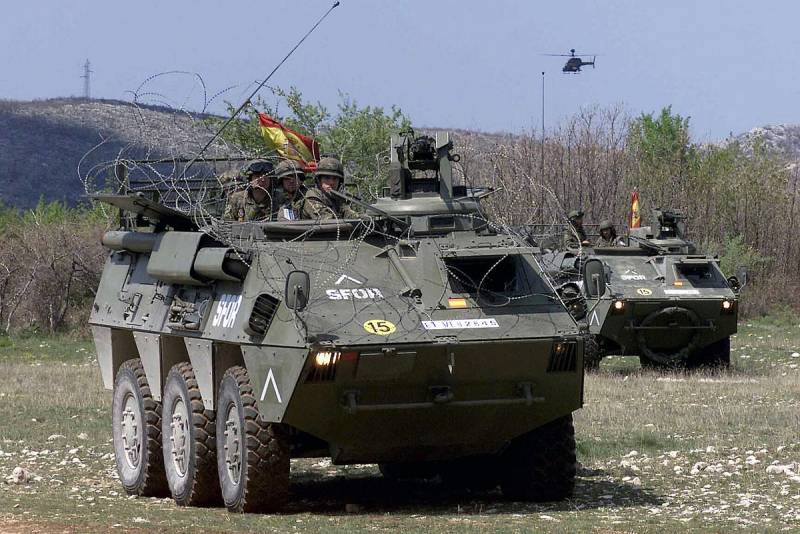
Information